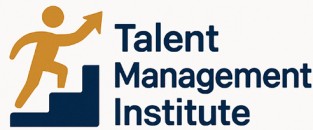
Understanding the Importance of Cohesive Teams
The Significance of Team Cohesiveness
In the realm of talent management, building a cohesive team holds paramount importance for any organization's success. It's not just about gathering a group of individuals and assuming they will function seamlessly together. A cohesive team is a structured alignment of members who work harmoniously toward shared goals, fostering an environment where trust and mutual respect are foundational. The merit of such teams can't be overstated. When cohesiveness is achieved, teams operate more efficiently, resolving conflicts with greater ease and productivity. By cultivating a strong team culture, the company reaps the rewards of high performance and innovative thinking. A key aspect of achieving this is a shared vision, which all members commit to, working collaboratively to see it through. For teams to reach this level of effectiveness, understanding individual behaviors and how they contribute to the larger group is crucial. Cohesion isn't merely the absence of conflict; it's about managing personal and professional differences constructively. This requires time and conscious effort to integrate diverse talents and perspectives, aiming to build trust among members. Strong leadership is another critical component in fostering team cohesion. Leaders who excel in this area deploy strategies that encourage open communication and debate ideas freely. Their role extends in guiding the behaviors cohesive teams should embody, aligning individual objectives with overarching goals. The importance of cohesive teams extends beyond immediate task completion. They represent the potential to innovate and thrive in ever-changing environments. Developing such teams involves understanding the dynamics at play and strategically guiding them, which ultimately leads to unified efforts and collective success. For further insights on how to nurture these vital attributes in your team, consider exploring expert methodologies and resources such as a leadership development consultant. This approach can provide additional structure to your efforts in creating a team that not only performs effectively but also elevates the organization's culture.Key Elements of Team Cohesion
Critical Aspects of Building Cohesion in Teams
Forming a cohesive team requires understanding the fundamental elements that contribute to team cohesion. Each team member plays a vital role in nurturing these elements, which pave the way for a high performing and effective team. Let's explore these key components:
- Shared Vision and Goals: A strong team aligns its efforts towards common objectives. Team members need to make sure that the team goals resonate with individual passions and the company's vision, paving the way for collective team success.
- Trust: Trust is the foundation of any cohesive team. It requires openness, honesty, and a willingness to be vulnerable with each other. A climate of trust enables group members to share ideas freely and engage in healthy debate, thereby boosting team effectiveness.
- Effective Communication: Clear and open communication among team members is crucial in maintaining cohesion. It allows team members to express concerns and appreciate diverse perspectives, minimizing potential conflict.
- Mutual Respect: Recognizing the strengths and contributions of each member fosters respect within the team. Respectful interactions help in developing personal connections, which form the glue of a strong team.
- Defined Roles and Responsibilities: Outlining what is expected from each team member can reduce misunderstandings. It allows each member to contribute effectively to team work by understanding their role in achieving team goals.
- Celebrating Success: Regularly acknowledging team achievements and individual accomplishments encourages group members to strive for excellence. This recognition fuels team motivation and reinforces a positive team culture.
These elements are critical in building cohesion in teams. Nurturing these factors in conjunction will help develop team behaviors that contribute to a productive and united workforce. To gain further insights, consider exploring about building trust and transparency within your team. By understanding these components, companies can foster a cohesive team that not only enhances productivity but also sustains a supportive work environment.
Strategies for Fostering Team Cohesion
Fostering Unity and Trust among Team Members
Creating a cohesive team isn't just about gathering a group of people with the right skills. It involves cultivating a culture of trust and openness that encourages team members to work collaboratively towards shared goals. This not only boosts productivity but also ensures team effectiveness. Establishing trust is the cornerstone of developing a strong team. When team members trust each other, they feel safe to express ideas, engage in debates, and even engage in constructive conflict without fear of retaliation. This is particularly emphasized in Patrick Lencioni’s work on high performing teams, where trust is identified as a fundamental characteristic of any cohesive team.Building a Shared Vision and Goals
To build cohesive teams, it is crucial to align everyone's efforts towards a common vision. This involves clearly defining the team goals and ensuring that each team member understands their role in achieving these objectives. When team members share a vision, it fosters personal investment and commitment, spurring the group to work even more effectively.Creating a Supportive Team Culture
A company culture that supports team cohesion values open communication and respects diverse viewpoints. Encouraging group members to express their unique perspectives not only enriches discussions but also enhances team work. The cohesion team flourishes in an environment where creativity and innovation are celebrated. To further support team culture, leaders should model the behaviors cohesive teams need, such as transparency, accountability, and mutual respect. By demonstrating these behaviors, leaders set the standard for what is expected, fostering an environment where cohesive teams can thrive.Implementing Structured Communication Methods
Effective communication is a key element in team cohesion. Establishing regular meetings to discuss progress, challenges, and any potential conflicts allows team members to stay aligned and address issues promptly. These structured communication methods prevent misunderstandings and promote effective debate that leads to innovative solutions. Leaders should encourage a culture of feedback to develop team members. Constructive feedback not only contributes to personal and professional growth but also strengthens the trust among team members. For more insights on crafting efficient internal programs that foster development, explore this effective mentorship program template. In conclusion, fostering team cohesion is an ongoing process that requires intentionality and dedication. By focusing on trust, shared vision, supportive culture, and effective communication, organizations can build and maintain strong and cohesive teams.Overcoming Challenges in Team Cohesion
Addressing Concerns and Conflicts Constructively
Building a cohesive team is not without its hurdles. One of the most significant challenges lies in addressing conflicts that arise among team members. Conflict, while often viewed negatively, can be an opportunity for growth when handled constructively. Trust plays a crucial role in navigating these conflicts, enabling team members to engage in open and honest communication. It’s imperative for a team culture to promote respectful debate and idea exchange, as this fosters team effectiveness and cohesion.
Balancing Individual and Team Goals
Another common challenge is aligning personal aspirations with the overarching team vision. Each team member brings unique skills and individual goals. Leaders must ensure that these personal ambitions complement the collective goals of the group. Encouraging members to see the value in achieving both personal and team objectives enhances their commitment to the cohesive team's success. This balance supports the development of a strong team that operates with shared goals and a unified purpose.
Navigating Diverse Perspectives
Diverse perspectives can pose both a challenge and an asset for teams. Cohesion is strengthened when group members learn to appreciate and leverage their differences, turning diversity into a competitive advantage. Effective team leaders facilitate an environment where diversity is celebrated, ensuring that all voices are heard and considered. This inclusive approach not only boosts team work but also aligns with the values of modern company culture.
Maintaining Consistency in Team Behaviors
Consistency in behaviors cohesive with the team’s values and procedures can also be challenging. Teams must establish clear guidelines and expectations for behavior, and team members should hold one another accountable. The presence of consistent behaviors fosters trust and predictability, essential components in developing cohesive, high-performing teams.
The Role of Leadership in Team Cohesion
Leadership's Influence in Creating Unified Groups
Leadership plays an indispensable role in building cohesive teams. An effective leader serves as a catalyst in uniting diverse members and fostering a culture of trust and open communication. To embody this role, leaders must actively model behaviors that enhance team cohesion and demonstrate the values they wish to see within their teams.
One of the fundamental leadership requirements is promoting a collective vision. A shared vision invigorates the group, allowing members to align personal goals with team objectives and thereby magnifying their contribution to the team’s success. Leaders facilitate this by encouraging team member participation in decision-making processes, empowering individuals to voice their thoughts and debate ideas constructively.
Developing trust among team members is another critical leadership responsibility. Trust is the bedrock of cohesive teams and can significantly influence the group's effectiveness. Leaders who nurture an environment where team members feel safe to take risks and express their concerns contribute to a culture of transparency and open dialogue. These practices help in minimizing trust conflicts, which are often impediments to team cohesion.
Leaders must also be adept at managing conflict within the team. Controlled conflict can be beneficial, allowing teams to explore different perspectives and enhance problem-solving skills. However, unresolved conflict or personal disagreements can jeopardize team effectiveness and cohesion. Leadership should therefore be proactive in facilitating healthy conflicts, ensuring that tensions are managed constructively and do not hinder group progress.
Recognizing and addressing the unique needs and strengths of each team member further enhances cohesion. Personalized attention from leaders, showing care for individual growth and development, strengthens member commitment to team activities. Acknowledging achievements and providing constructive feedback are also important in maintaining high-performing teams.
In conclusion, leaders are pivotal in constructing a strong team culture. Through consistent, supportive behaviors, and visionary guidance, leaders can inspire trust, manage conflict, and ultimately build cohesive teams that achieve their collective goals.
Measuring the Success of Cohesive Teams
Evaluating the Impact of Unified Teams
Assessing the success of cohesive teams is fundamental to understanding their influence on a company's goals and culture. It's not just about whether the team achieves objectives, but also how they reach those goals.- Performance Metrics: Measuring performance involves tracking both quantitative and qualitative metrics. Teams that exhibit high cohesion often meet targets more effectively, showing increased productivity and efficiency. Monitoring these aspects can provide valuable insights into the team’s operational successes and areas needing improvement.
- Member Satisfaction: Regular feedback from team members is crucial. When individuals feel comfortable expressing their ideas and believe their contributions matter, trust and team effectiveness flourish. Surveys or one-on-one interviews can help gauge this sentiment.
- Behavioral Observations: Observing interactions and behaviors within the group can reveal the level of trust and cooperation among members. Positive behaviors cohesive to collaboration often lead to improved team morale and a shared vision.
- Conflict Resolution Skills: How a team handles conflict and constructs debates over ideas can indicate its cohesion level. Effective teams manage personal differences effectively without compromising the group’s harmony.
Leadership Influence and Cultural Fit
Leadership is a significant factor in nurturing a cohesive team. Leaders who demonstrate transparency and collaboration can substantially impact team culture. The role of leadership in this regard involves:- Clear Vision and Communication: Leaders need to articulate a clear vision and foster open communication to ensure all team members stay aligned with the common goals of the company.
- Fostering Trust: Building trust among team members is critical and hinges on the leader’s ability to create an environment where people feel valued and understood.
- Developing Cohesive Behaviors: Leaders should nurture cohesive behaviors by promoting team work, encouraging idea sharing, and resolving conflicts promptly.













